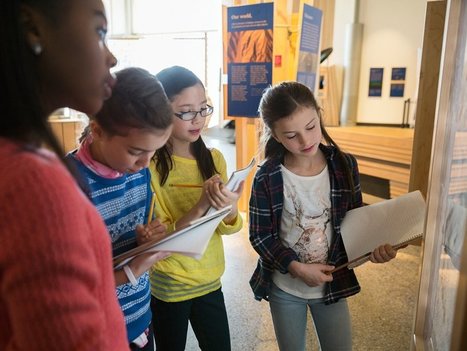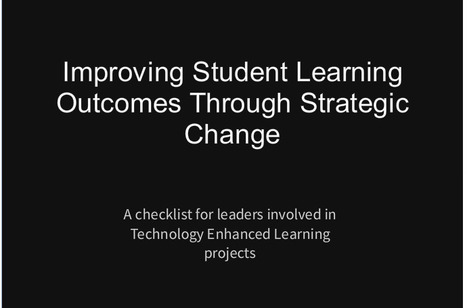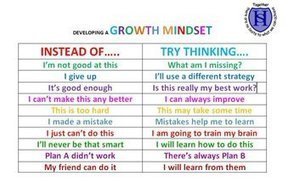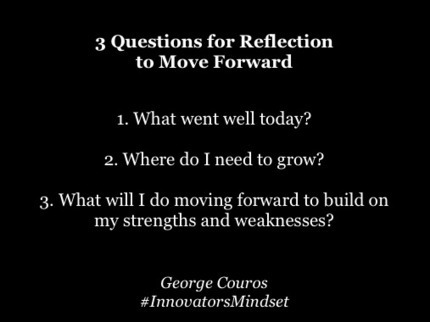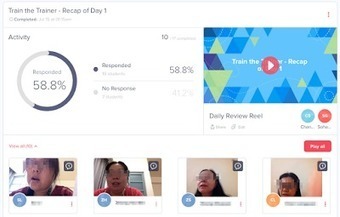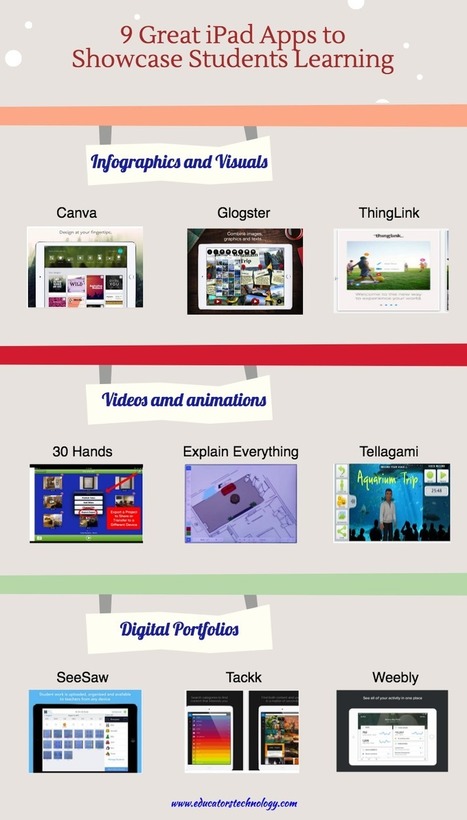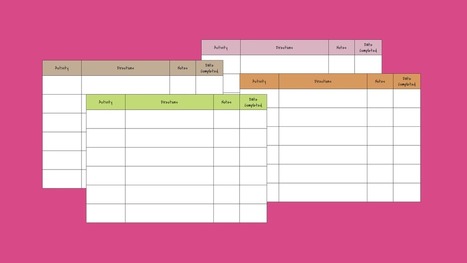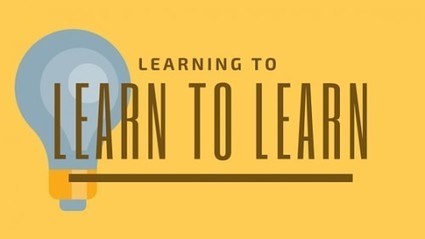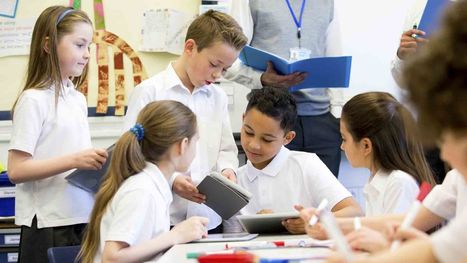The Covid-19 pandemic has dramatically upended traditional schooling and made remote learning the “new normal.” Teachers are scrambling to offer some form of continuing education using virtual technologies, with the recognition that traditional approaches to curriculum, instruction, assessment, and grading must be altered. While it might be more expedient to present online lessons, electronic worksheets, and resource packets, we propose that the learn-at-home circumstance offers an opportunity to present students with more engaging and meaningful learning experiences. More specifically, we recommend providing students with assignments and tasks that challenge them to find information from various sources, critically appraise what they find, and use what they learn to address interesting issues and genuine problems.
Get Started for FREE
Sign up with Facebook Sign up with X
I don't have a Facebook or a X account

 Your new post is loading... Your new post is loading...
 Your new post is loading... Your new post is loading...
Current selected tag: 'student learning'. Clear
Last fall, professors told us about their plans to experiment this year with technology-enabled teaching. Now they reflect on the successes and shortcomings.
From
phys
A recent study by North Carolina State University researchers finds that teaching critical thinking skills in a humanities course significantly reduces student beliefs in "pseudoscience" that is unsupported by facts.
Poverty is everyone's problem. The “new normal” in U.S. public schools is that 51 percent of all students come from low-income families. This has a far-reaching consequences because of poverty’s effect on a child’s brain.
One of the most nerve-wrecking experiences that a student can experience is waiting for feedback from an instructor. Via Becky Roehrs 
Becky Roehrs's curator insight,
August 17, 2017 5:47 PM
These 3 tips are common sense, but are important-I provide a survey and discussion area for the first week to get a feel for what my student's backgrounds are, and why they are taking the class. Plus they need to hear what they are doing correctly and need ideas, examples and explanation on how to improve..
For this post, Tab Betts (Technology Enhanced Learning) spoke to Professor Janet Boddy (Education) about her experience of using lecture capture in her teaching at the University of Sussex.
Students need good judgment to successfully navigate the sea of information in their academic lives, as well as for the social and emotional choices and decisions that they will inevitably face. For all of this, students require the executive function of judgment to monitor their understanding and interpretation. Judgment is critical for thoughtful consideration of their choices and the consequences of their actions. In this post, I'll suggest ways that you can activate your students' neuroplasticity to strengthen their brains' developing neural networks that support judgment.
Online toolkit to support HE strategic change using digital technology
Here's where tools like Google Forms' quiz mode, Add-ons like Flubaroo, and other simple quiz systems like Formative have value for me and many other educators. A short multiple choice quiz that gives students instant or near instant feedback can be one part of giving you and your students an opportunity to see what they know about a topic before embarking on a new unit of study.
Yoram and Edith Neumann, who have been involved with online education for decades, share some lessons about what factors most help students learn.
From
twitter
Our words are powerful. Simple phrases can change from a fixed to a growth mindset. #SXSWedu pic.twitter.com/qFyAsm6Gzp
Over the years though, technology has provided educators more viable options to administer assessments and obtain quality feedback within a more reasonable time frame.
There are many apps that do promote critical thinking--and often extended critical thinking and learning at that. These aren't clinical "critical thinking building" programs either, but rather often enjoyable exercises in strategy, tactics, and problem-solving thought. |
There are many similarities to adults and students when it comes to learning. If you were an auditory learner in school, you probably still prefer that learning method [1]. If you were a verbal learner you still prefer that. Adults are able to learn from additional styles as they know what they need to pick out from training, and they know the impact it will have on their job if they do not. The motivation to learn is more relevant to adults than it is to students, but trainers need to be aware of learner preferences.
“Student Voice” is something that many schools are focusing on and for a good reason. If we, as educators, understand that we serve our students and not the other way around, getting their thought and feedback for not only problems but solutions in moving our schools forward, is crucial. From my experience though, I have seen a lot of money, time, and effort, in getting thoughts and feedback from students, listening to their voice, and then often, no action based on what they have shared. Dean Shareski wrote a challenging post on this and shared the following thoughts on “Student Voice”:
I’m really excited to see that educators are clear about the use of formative and summative assessment. We’re using formative assessment to gauge the effectiveness of our teaching and to know what our students know and have yet to learn. We’re using summative assessment to evaluate student progress toward course goals and report grades.
Resources for Teachers - Tools, Information and Resources to Help Teachers Increase Student Learning Via Grant Montgomery, Dean J. Fusto
One of the true keys to learning and developing any ability is the willingness and capacity to reflect on what we have learned. Via Nik Peachey 
Nik Peachey's curator insight,
May 12, 2017 2:04 AM
My latest blog post about a tool to encourage students to reflect on their learning.
Free resource of educational web tools, 21st century skills, tips and tutorials on how teachers and students integrate technology into education 
Yeison Ossa Trejos's curator insight,
November 7, 2016 11:40 AM
In the 21st century, education must get along with technology. Teachers are expected to be able to integrate digital resources into the classrrom if they want their practice to be successful. Students love using digital devices to support their learning process. For this reason teachers should keep in mind the use of these tools to promote, engage, and facilitate students' learning as often as possible. One way to do this is by incorporating apps that can help students demonstarte what they have learnt through posters, infographics, videos, animations, and digital portafolios. These resources not only engage learners but also boost their creativity in and outside the classroom.
In this #LTHEchat we will discussing the role of the library in student learning. Information has changed from being nearly entirely text and paper based to a wide range of media many of which are available electronically. This has changed the way that university libraries see themselves. They are no longer just a physical space but a virtual one too. The question is have libraries evolved quickly enough to maximise the student learning experience across all disciplines in the 21st century? And are students developing the information literacy skills they need for the future employment? With Isobel Gowers @Isobel_Gowers
In our never-ending quest to find better ways to differentiate and personalize instruction for students, we have plenty of options. I covered a lot of the basics in my Differentiation Starter Kit. Then last year we learned how math teacher Natalie McCutchen manages a self-paced classroom. And for ESL students, there are the Can-Do Descriptors.
Today’s best and brightest students can only be described as such because they believe in their own abilities; if they didn’t, they’d have fallen behind their peers long ago. In the same breath, struggling students rarely have as much confidence as their higher-achieving peers, which results in a vicious cycle of self-limitation. As educators, we... Read More
The latest from the Assessment in Action program (http://www.ala.org/acrl/AiA) is a report which summarises key evidence from the two years of the AiA project (a US project about evaluating impact and value of libraries in Higher Education).
In memory of my friend, mentor, and colleague, Jay Cross, and his most recent campaign for Real Learning, I thought it appropriate to talk about learning to learn, or meta-learning. It was a passion we both shared, e.g. coming together to form the Meta-Learning Lab in the early 00’s, and it has persisted in both …
Student engagement is a top priority for educators, but engagement doesn't always mean the kids are learning. |









